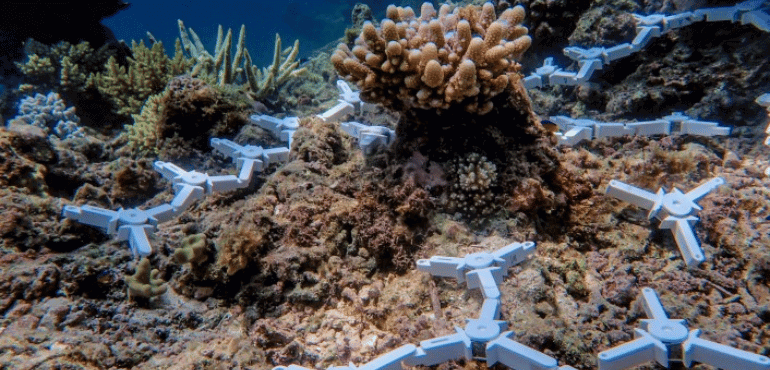Groundbreaking efforts bring hope for the Great Barrier Reef’s recovery
In a historic move towards reef restoration, scientists are embarking on the largest coral restoration trial ever attempted.
Led by the Australian Institute of Marine Science (AIMS), this innovative initiative involves delivering around 100,000 baby corals to the Great Barrier Reef, marking a pivotal moment in coral conservation research.
Reviving a Reef Ecosystem
This ambitious endeavour, a collaborative effort by various organisations within the Reef Restoration and Adaptation Program (RRAP), aims to deepen our understanding of coral breeding, treatment, and delivery techniques.
The primary goal is to facilitate the recovery of reefs affected by climate change-induced disturbances, such as coral bleaching.
Scaling Up: From Research to Reality
Dr. Line Bay, AIMS Research Program Director, highlights the significance of this trial in advancing coral conservation and aquaculture research.
The process involves refining techniques developed over recent years and combining multiple investigations to comprehend how these corals will thrive under natural conditions.
The Journey Ahead
Dr. Muhammad Abdul Wahab emphasises the substantial increase in corals delivered to the reef, outlining a journey to eventually deploy millions of heat-tolerant corals annually.
Innovations like the AutoSpawner have revolutionised the production of coral larvae, streamlining the process and improving efficiency.
Deploying Hope
The trial, initiated in October, involves settling larvae onto specialised tiles and rearing them into healthy baby corals.
Techniques like using non-toxic coatings on deployment devices aim to ensure the young corals’ survival during their initial year on the reef.
Charting the Future
As this groundbreaking trial progresses, it seeks to answer critical questions about deployment scenarios and environmental impacts, essential for enhancing restoration efficiencies.
Dr. Cedric Robillot stresses the urgency of pioneering scalable solutions, given the challenges posed by warming ocean temperatures.
Hope Amidst Challenges
Dr. Bay emphasises the need for a holistic approach, acknowledging that a suite of methods, along with effective reef management and emissions reductions, is crucial for the reef’s survival.
This collaborative effort, backed by various scientific institutions and funding partnerships, stands as a beacon of hope for the Great Barrier Reef’s future.
As the trials continue, they pave the way for a comprehensive toolkit to restore and safeguard this natural wonder against the perils of a changing climate.




